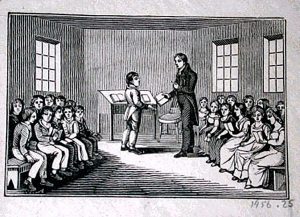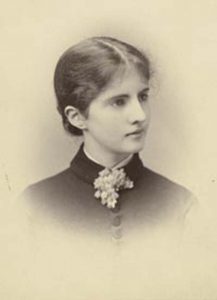Both sexes eat, sleep, hate,
love and desire alike.
Everything which relates to the operations
of the mind is common in both sexes…
If they are allowed
to attend picnics together, and balls,
and dancing schools,
and the opera it certainly
will not injure them to use
chalk at the same blackboard.”
Susan B. Anthony, Speech, 1856

When the Anthony family lost their business due to the 1837 depression, Susan B. Anthony began teaching to support herself. By 1846, 26-year-old Susan B. Anthony had worked her way up to headmistress of the Women’s Academy, in Canajoharie N.Y. Effective and respected, she never grew accustomed to earning three-quarters less pay than males teachers.
At the 1853 state teacher’s convention, Susan B. Anthony spoke up to admit women into professions and for better pay for women teachers. Her demand to speak in public, as a woman, was shocking, not just to the men, but also many women, who yelled at her to “sit down” and “get out.” (p.103 Life & Work)
By 1859, it was no longer a novelty to hear Susan B. Anthony address the state teacher’s convention, but her arguments still were. She insisted that boys and girls be educated together, claiming there was no difference between the minds of men and women.

In the 1890s, Anthony organized a committee to raise $50,000 to ensure the admittance of women into the University of Rochester. In a last-minute effort to meet the deadline, she pledged the cash value of her life insurance policy. The University was forced to make good on its promise, admitting women for the first time in 1900.
